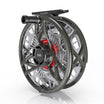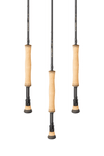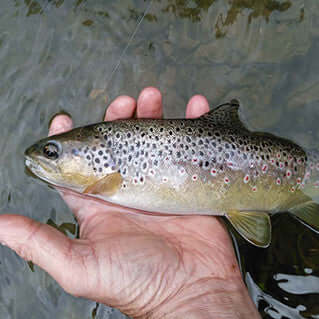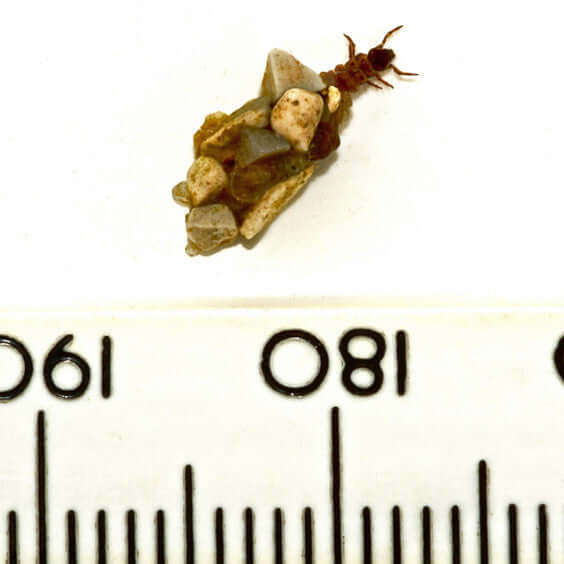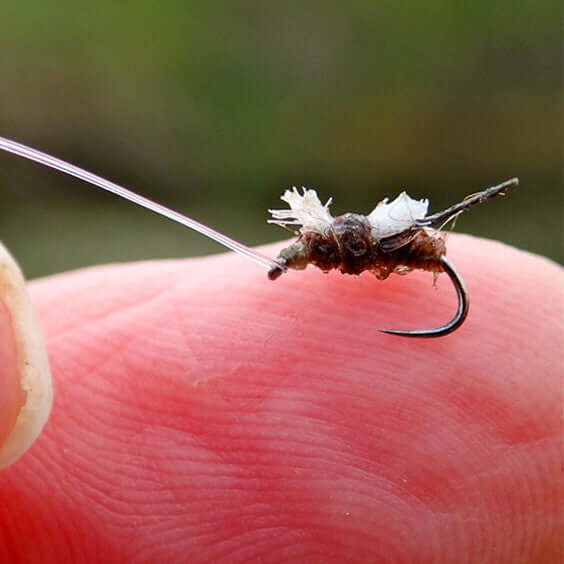We have come so close
To the edge of possibilities in our little sport, to where we can achieve almost perfect presentation, along with pure simplicity. All my fishing life - over 50 years now - I have aimed towards this goal. Sometimes, often, I told myself that we had already achieved it - the close approach. Easy to do, when you catch a lot of fish, although most of the time I knew, deep down, that this was self-delusion, mixed with good luck, some skills and experience, being in the right place at the right time, or some unquantifiable mixture of these, which leads to happy results... You know, too, how it is. Let’s be honest - in England, on artificial, still water fisheries? Come on, that is just not real. It is on the river, and perhaps the wild lakes, where we have made the breakthrough.

Simple perfection
Conventional fly lines
About 15 years ago - yes, that long - I began to realise the limitations of ‘conventional’ fly lines. This was about the time when we were all getting into ‘Czech nymph’ and ‘Euro nymph’, in which the fly line was there for nothing more than reel padding, backing. We weren’t using the fly line, and rather, thanks to our European friends, were exploring the beginnings of a leader-only approach. Sure, the thick plastic fly lines were fine on stocked British still waters, or even wild streams populated with huge numbers of aggressive brown trout, or on the travesty of the modern English chalk streams - but I don’t really want to go there. Really.
Now, we have the new generation of fly lines which have rendered both conventional lines and Euro-style leaders almost obsolete. There are dwindling doubters, particularly among the competitive ‘speed fishers’ who are able to use a well-constructed mono leader, with nymph, with devastating effect. For more temperate souls among us, however, we can exploit the properties of the micro-thin fly lines for both nymph and dry fly, hardly compromising presentation of the former, and far exceeding what is possible on a leader-only rig with dry fly. And I do mean far exceeding. Hugely. Though this is not the point, or at least all of it.
Competitive fishing
When I was involved in competitive fly fishing I realised that success was largely a function of keeping control, and for me that meant removing as many of the variables as possible and getting rid of complications. I never had a comfort with multiple rod/line/rig set ups, any more than boxes full of gear hauled out on the boats. Nothing wrong with all this for some of us, obviously, but it wasn’t for me. I wanted to do everything I needed to do with the rod in my hand and, ideally, the same line, and whatever I wanted to carry in a pocket or two. This is fly fishing isn’t it, supposed to set the resident hunter in us free, to get away from clutter and complexity? I always wanted to approach the water carrying everything I will use in that session, all readily to hand and rapidly interchangeable.
Oppo and PTN
In short, the less I had to think about, the better it was for me - which, of course, is even better nowadays! So, I’m on la Ternoise, a chalk stream in the north of France, and the sun is heavy on my back. As I arrive, I watch a spaniel chasing some ducks across the river, right around where I want to fish. I know this place well, and there will be trout in the shallows, knocking off Hydro caddis and gammarus, and - sometimes - pale wateries and midges on the surface, though I think not today, in this sun, after that bloody dog. I’m already set up with the three weight Presentation line and, because of the (refreshing) down-streamer, a duo rig, which is about as complicated as it gets for me nowadays. Short tippet of about eight feet, and no leader - which is absolutely unnecessary, because these lines effectively are a fly line/leader in combination. I would like to fish a plume tip, which would be devastating here, sure, but in such conditions I could not possibly achieve reasonable presentation with this, so an Oppo, turned over and stabilised by a PTN on point, will have to do the job.

La Ternoise
Deep down, anyway, I know, just know, that the fish are more likely to snatch at the nymph. There is the odd pale watery on the surface, but they drift by and escape, untroubled by any risers at all (and this is perfect, just perfect, hatch and rise water, believe me). It’s been ten minutes since the spaniel and I’m standing a little back from the stream’s edge, partially sheltered among reeds, with lovely water crowfoot a little upstream of my position, on the rapid, and a fast rip on the far bank, then a seam, and then glide water all the way into the shallows under my rod tip. I am part of the river furniture now. It is so alive, and my skin is tingling with the vitality of it all. I roll out a cast, and another, very close in. I know there’s nothing there right now, but I like to get the measure of it all, to feel the stream.
Another cast, overhead now, a little further, and another, pitching up to the lip of the crowfoot. The line does not even mark the pattern of the surface and all I see is the plop of the PTN touching down, and then the glow of the Oppo setting on its drift. The moment is right now. The fifth cast, the first with purpose, with belief that a fish would come. You understand. The PTN goes in on the seam and I see the Oppo riding the boisterous flow; down, down, across from me and then - it’s gone. The certainty of tightening into the pulsing, twisting energy of a trout, settling inside five seconds against the soft rod and the disturbance-free line - there is no impact - and I can steer the fish towards me, into the glide.

Perfect trout habitat
Plume tip
Really, it’s over for me now, other than sight of the wild fish, and I want to slip the hook as soon as I can. The moment has been made. It is all such a wonderful, easy simplicity and I have had hardly to think. The analysis of the stream is a mixture of past experience and instinct, almost subliminal now, and the wind has forced me away from the standard state of the plume tip. Anyway, in a moment, given the conditions, I will pinch off the Oppo and the nymph, and on will go the plume tip. All that will really matter is then having the fly size right to match the size of the emerging fly - probably a 21 in heron herl with a single tip of CDC, shuttlecock, to hint at those pale wateries. It needs only the merest hint. And the best of it is the invariance. Here I am on la Ternoise, but I could be on Eden, I could be on the San. There would be no difference whatsoever.
Essential elements
On any European river I know, from mountain rivulet to tailwater, from chalk stream to middle and upper river on the scale of the eastern giants - wherever there are up-wings, midges and caddis, and trout and grayling to feed on them, the approach is identical. Only the conditions and circumstances force adaptation from this core approach. Easy, yes, simple, too, but not facile. Hardly that, not after all these years on this fascinating journey, after clearing away all the noise. Not after the genius moment of the introduction of the micro-thin lines, properly matching the very soft rods we have now. And certainly not after striving towards minimum disturbance fishing of the river space with a fly, such that we now no more than touch it, a part of it, a part of the predator/prey structure of a clear, cold stream. This is the close approach to everything I wanted fly fishing to be.

No need to even bring them out of the water






